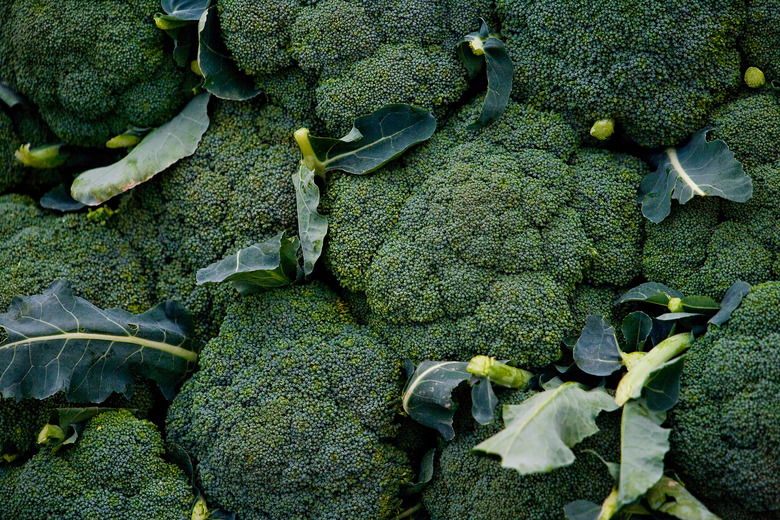Poisonous Broccoli Flowers
We may receive a commission on purchases made from links.
Broccoli. The very word can send children screaming in terror and cause adults to tremble in fear. Despite the bad press broccoli gets, it is quite edible and nutritious. Most parts of the broccoli plant (Brassica oleracea var. italica) can be eaten, from the immature flowers to the stalks and even the leaves.
The only parts of broccoli that have been shown to be poisonous are the seeds and roots. Unless your broccoli hangs around in the back of the fridge until it blossoms and sets seed, there is nothing to fear but broccoli itself.
The Broccoli Basics
The Broccoli Basics
Broccoli may be the bane of every child's existence, but it is in fact very safe for humans to eat. The part of broccoli most commonly eaten by humans is the immature flower. Stalks and leaves can also be delicious when steamed until softened and served like kohlrabi or cabbage. Some members of the broccoli family can be dangerous when consumed; however, broccoli is only poisonous to humans when the flowers are mature and contain seed capsules.
There Are Dangerous Brassicas
There Are Dangerous Brassicas
Broccoli is in the genus Brassica. This group includes a wide variety of plants, including the common cauliflower (Brassica oleracea var. botrytis) and cabbage (Brassica oleracea var. capitata), and the lesser-known wild mustard (Brassica arvensis). Both wild mustard and white mustard can cause serious reactions in humans.
These plants are truly poisonous. Symptoms run the gamut from gastroenteritis to pain, diarrhea, and even upper gastrointestinal disturbances. In addition, kale, cabbage, and turnip have been known to cause goiters.
Brassica and Livestock
Brassica and Livestock
Often, livestock eat the most dangerous kinds of brassicas. Wild and tansy mustard (Descurainia pinnata), field pennycress (Thlaspi arvense), yellow rocket (Barbarea vulgaris), and Virginia pepperweed (Lepidium virginicum) are among the brassicas found as pasture weeds. Fortunately, pasture brassicas — and cultivated ones, as well — must be eaten in large quantities over a period of time before livestock begin to demonstrate symptoms.
Carefully check pastures for brassicas, and destroy them as soon as they are found. All kinds of livestock, including poultry, cattle, horses, goats, and sheep, can be affected by brassica poisoning.
Understanding the Poisonous Chemicals
Understanding the Poisonous Chemicals
The main chemicals in brassicas that are poisonous are glycosinolates and nitrates. When a ruminant consumes plants containing glycosinolates, it breaks them down into isoallyl thiocyanates, which is where the trouble begins. If these chemicals are synthesized in the gut, they can interfere with thyroid function and reduce production of thyroxine.
Nitrates, on the other hand, are constructed within plant material in periods of plant stress. Excess nitrate intake interferes with the ability of hemoglobin to carry oxygen, leading to abdominal pain, labored breathing, and a blue color in mucus membranes. Nitrates in the rumen can also cause vitamin A deficiency.
References
- University of Kentucky College of Agriculture; Plants Poisonous to Poultry; April 2011
- Texas A&M Cooperative Extension; Secondary Edible Parts of Vegetables; M.J. Stephens; May 1998
- University of Illinois Extension: Broccoli
- University of Maryland Medical Center; Food Poisoning; Stephen D. Ehrlich; August 2010
- University of Missouri Extension; Plants Poisonous to Livestock; Fred Fishel; September 2001
